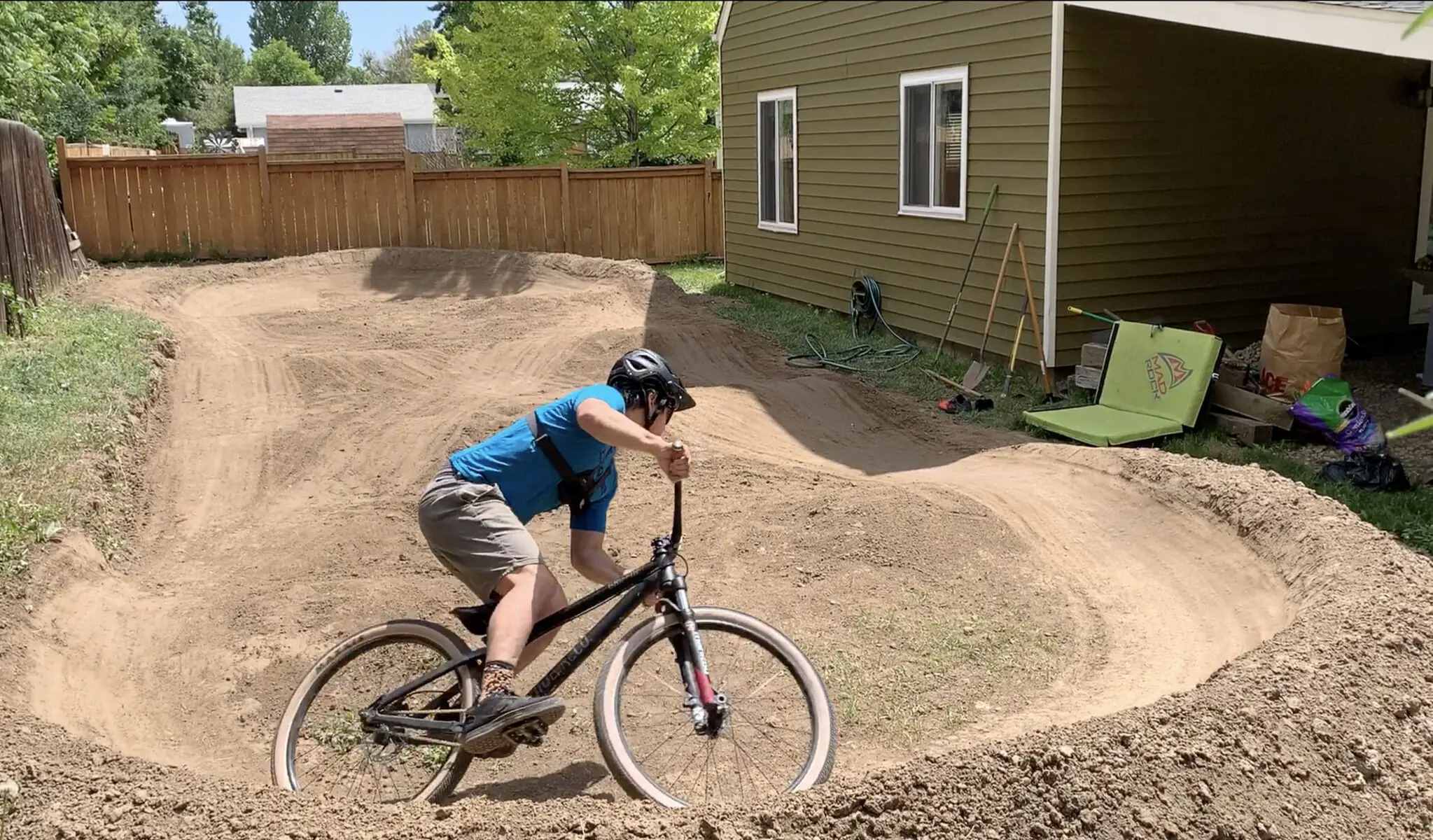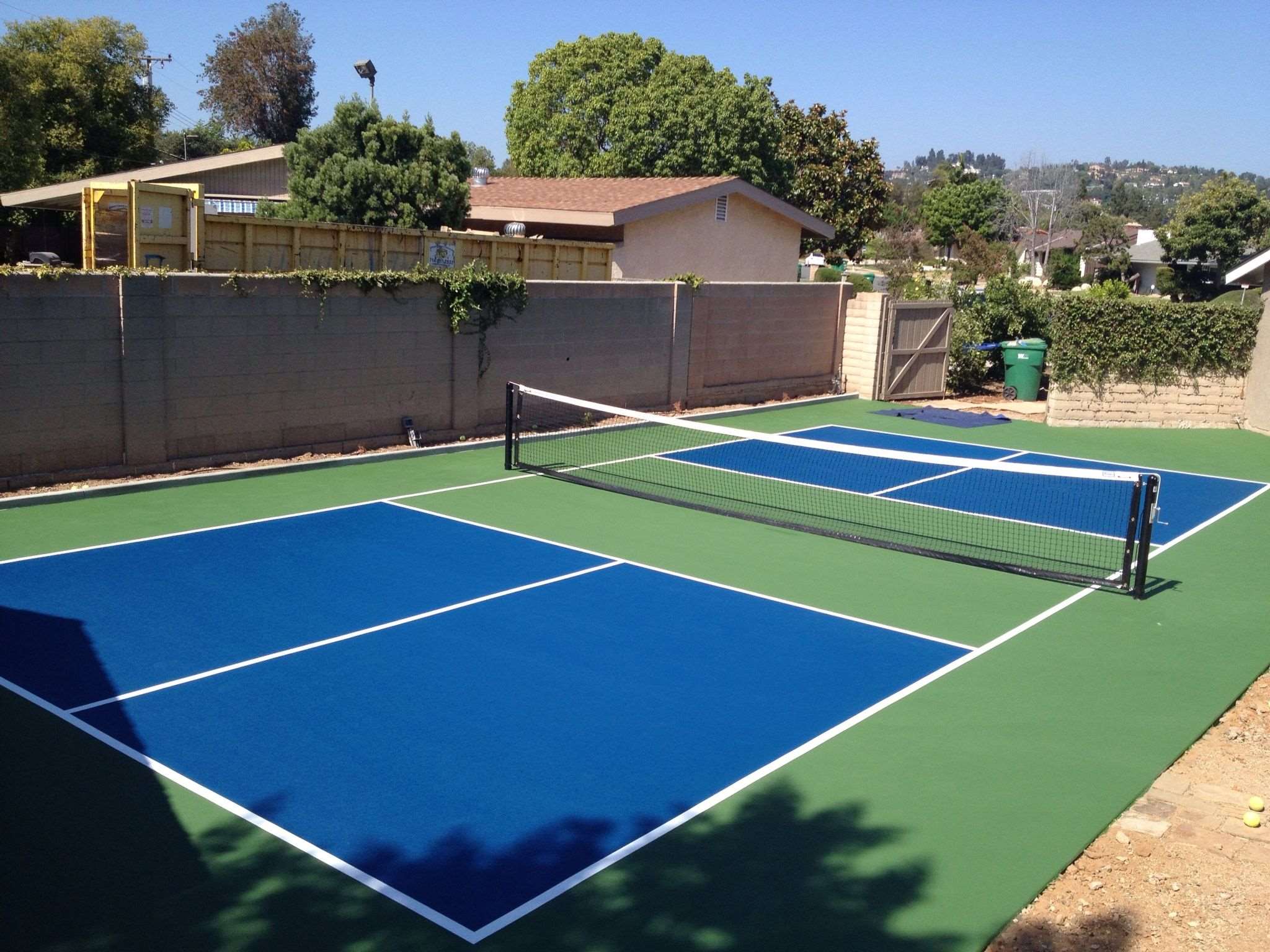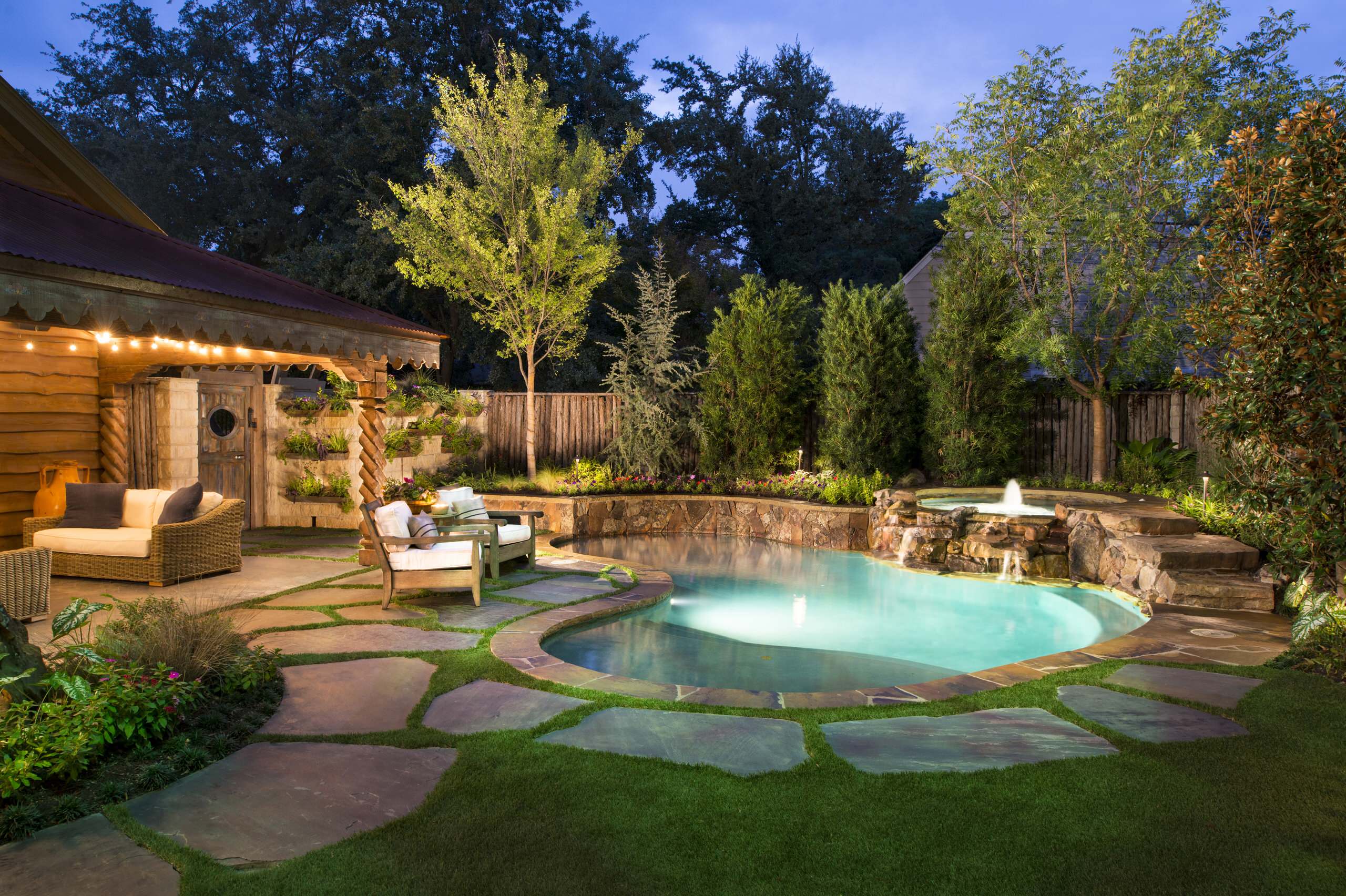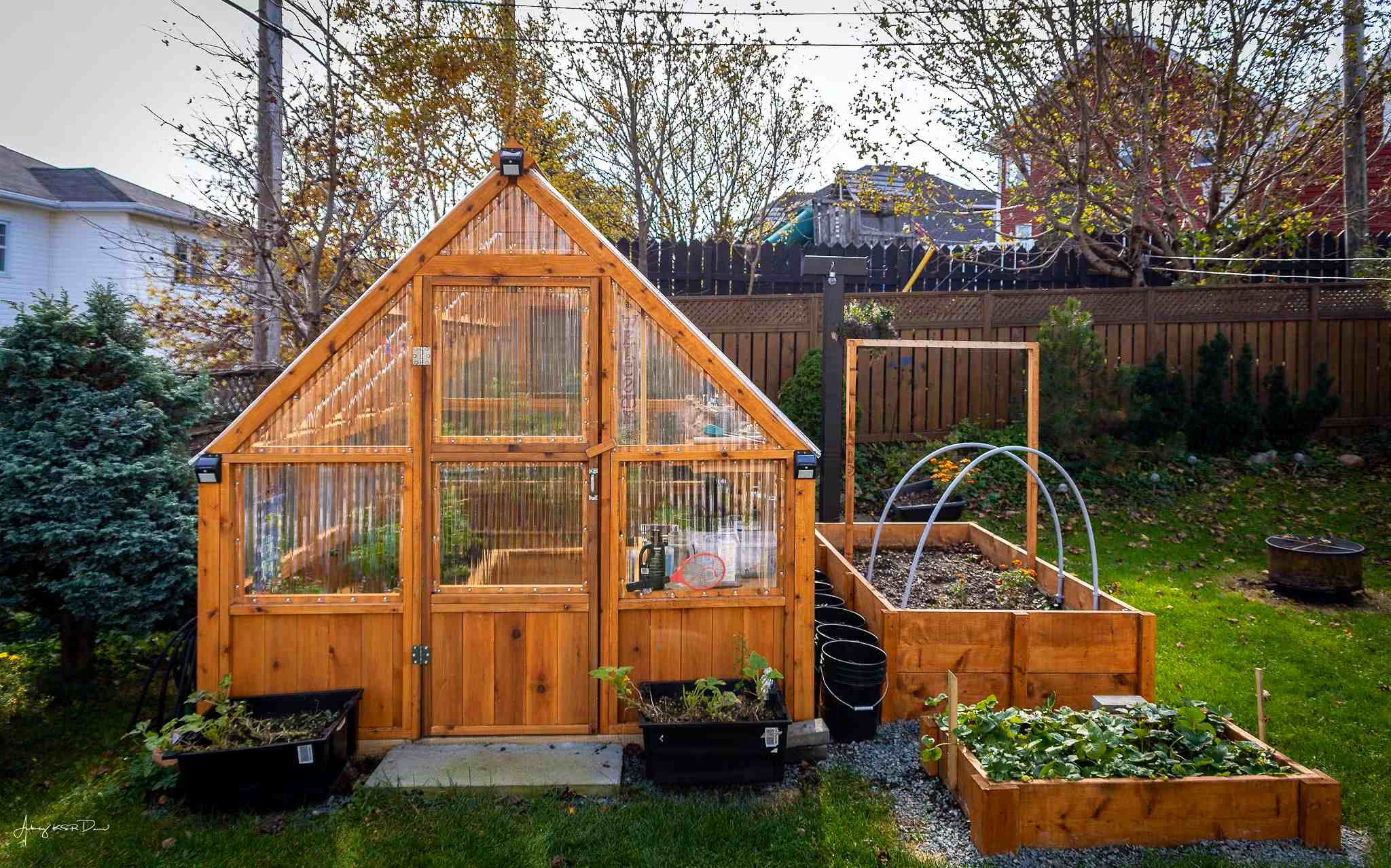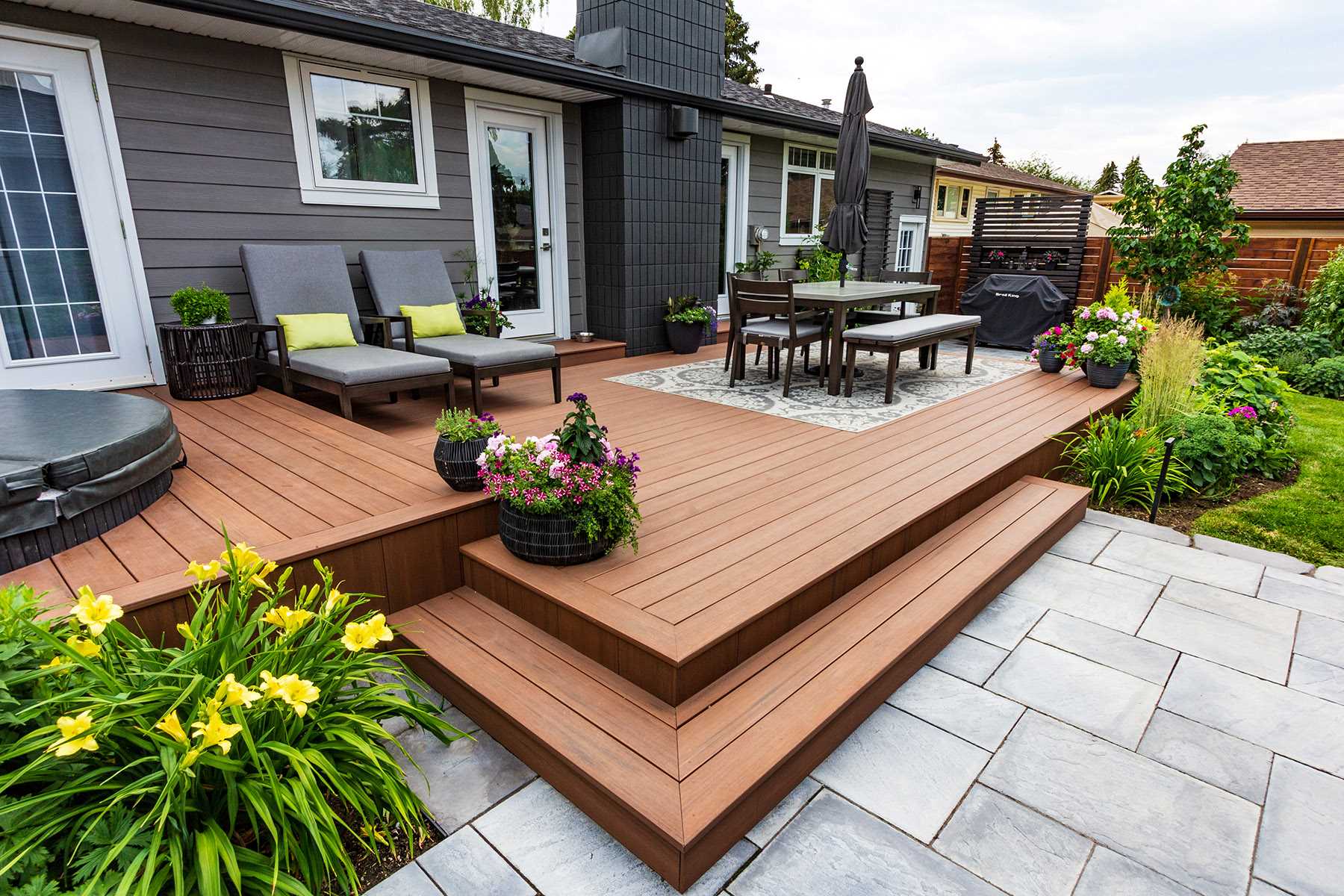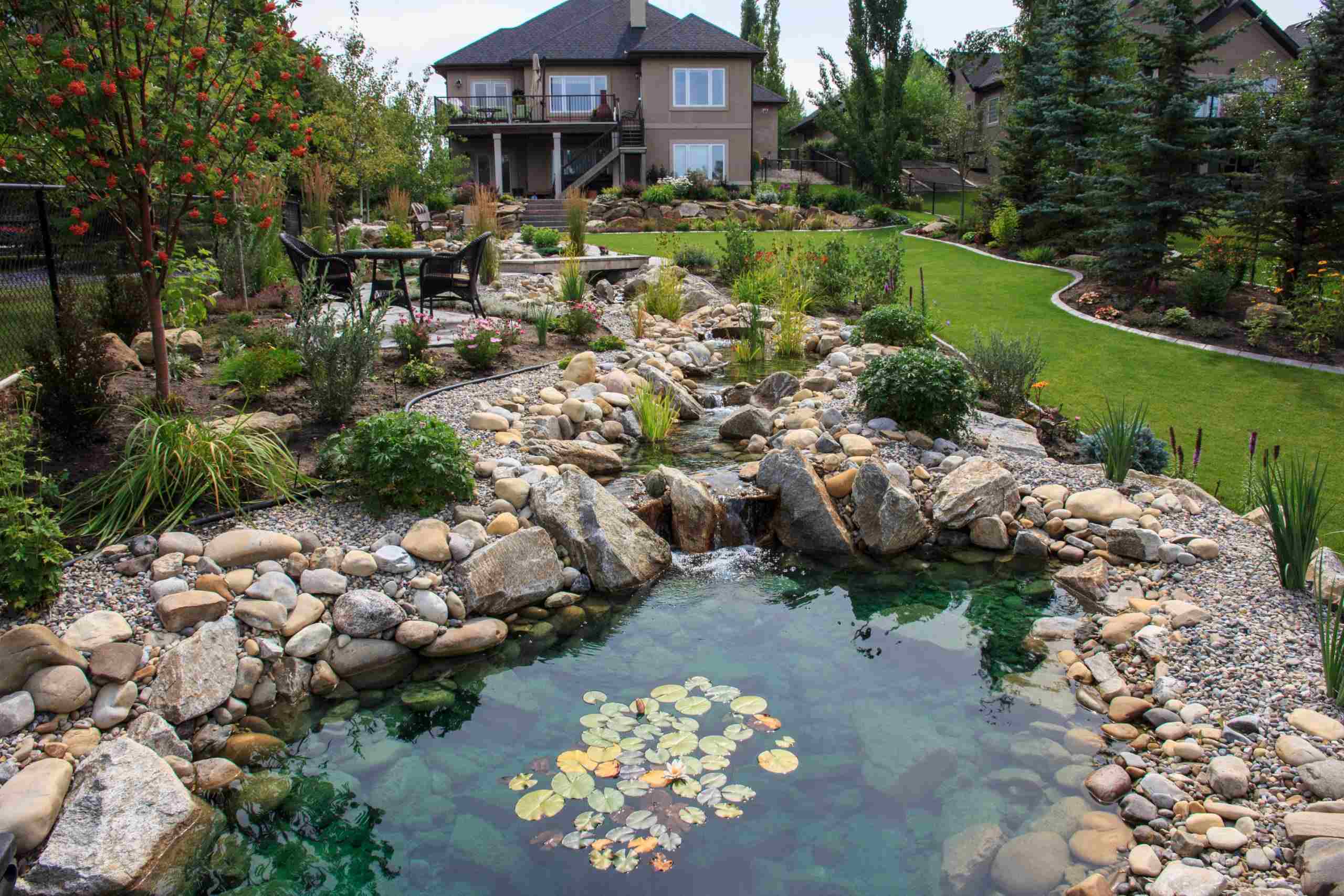Home>Gardening Techniques>DIY Projects>How To Build A Tiny House In Your Backyard


DIY Projects
How To Build A Tiny House In Your Backyard
Published: August 5, 2023
Learn how to build a DIY tiny house in your backyard with our step-by-step guide. Get inspired for your next DIY project and create your dream tiny home.
(Many of the links in this article redirect to a specific reviewed product. Your purchase of these products through affiliate links helps to generate commission for Chicagolandgardening.com, at no extra cost. Learn more)
Table of Contents
- Introduction
- Step 1: Research and Planning
- Step 2: Obtaining the Necessary Permits
- Step 3: Designing Your Tiny House
- Step 4: Gathering Materials and Tools
- Step 5: Site Preparation and Foundation
- Step 6: Framing the Tiny House
- Step 7: Installing Utilities
- Step 8: Interior Design and Layout
- Step 9: Insulation and Weatherproofing
- Step 10: Flooring and Wall Installation
- Step 11: Roofing and Exterior Finishes
- Step 12: Installing Doors and Windows
- Step 13: Electrical and Plumbing Installation
- Step 14: Adding Fixtures and Appliances
- Step 15: Final Touches and Decoration
- Conclusion
Introduction
Welcome to the world of DIY projects! If you’ve ever dreamed of having your own cozy hideaway right in your backyard, building a tiny house might be the perfect project for you. A tiny house is a compact and efficient living space that allows you to downsize and simplify your lifestyle while still enjoying all the comforts of a traditional home.
Building a tiny house can be an incredibly rewarding experience. Not only will it provide you with a unique and customizable space, but it will also give you the opportunity to showcase your creativity and woodworking skills. Whether you’re an experienced DIYer or just starting out, this guide will walk you through the step-by-step process of building your very own tiny house.
Before we dive into the nitty-gritty details, it’s important to mention that building a tiny house requires careful planning, research, and adherence to local building codes and regulations. It’s crucial to obtain the necessary permits and ensure that your project complies with all safety requirements. Consulting with professionals, such as architects and contractors, can also be helpful to ensure a successful and legally compliant build.
In the following sections, we’ll explore each step of the process in detail, from the initial research and planning to the final touches and decoration. By following this guide and using your own creativity, you’ll be well on your way to creating a beautiful and functional tiny house that you can proudly call your own.
Step 1: Research and Planning
Embarking on a building project starts with thorough research and careful planning. This step is crucial to ensure that you’re well-informed and prepared for the journey ahead. Here are some key aspects to consider:
1. Determine Your Needs and Goals: Start by defining your objectives and envisioning how you will use your tiny house. Do you plan to use it as a full-time residence, a guest house, or a vacation retreat? Understanding your needs will help you make informed decisions throughout the process.
2. Research Local Building Codes and Regulations: Before you begin construction, familiarize yourself with the building codes and regulations in your area. Different jurisdictions may have specific requirements for tiny houses, such as minimum square footage, zoning restrictions, and utility hookups.
3. Set Your Budget: Determine your budget early on to avoid any financial surprises along the way. Take into account not just the materials and tools needed for construction, but also permits, utilities, and interior finishes. Research the costs of similar projects to get a rough estimate.
4. Explore Different Tiny House Designs: There are various design styles and layouts to choose from when it comes to tiny houses. Consider your personal preferences, lifestyle, and the functionality you desire. Look for inspiration in books, magazines, online forums, and tiny house communities.
5. Create a Floor Plan: Once you have an idea of the design style you want, create a detailed floor plan. This will help you visualize the distribution of space and ensure that your tiny house meets your individual needs. Consider factors such as sleeping areas, kitchen and bathroom layouts, and storage solutions.
6. Consider Off-Grid or On-Grid Living: Determine whether you want to live off-grid, relying on alternative energy sources like solar power, or connect to traditional utilities. Off-grid living can provide greater independence and sustainability, but it requires additional planning and investment.
7. Research Materials and Suppliers: Look into the materials and suppliers available in your area, as well as their costs and sustainability. Research eco-friendly and energy-efficient options that align with your values. Seek recommendations from other builders or consult local hardware stores.
By conducting thorough research and thinking through these key aspects, you’ll have a solid foundation for the rest of your tiny house building journey. Remember to document your findings, collect inspiration, and consult with experts who can provide valuable insights based on their experience. Planning ahead will set you up for success and ensure that your tiny house is a true reflection of your vision and needs.
Step 2: Obtaining the Necessary Permits
Before you can begin construction on your tiny house, it’s essential to obtain the necessary permits and approvals required by your local jurisdiction. Building codes and regulations vary depending on your location, so it’s crucial to research and comply with the specific requirements.
1. Research Local Building Codes: Start by researching the building codes and regulations applicable to tiny houses in your area. Visit your local building department or check their website for information on the permits you need, zoning restrictions, and any specific requirements for tiny house construction.
2. Determine Permit Requirements: Contact your local building department to determine the specific permits you’ll need for your tiny house project. These may include building permits, electrical permits, plumbing permits, and septic permits. Be sure to inquire about any additional documents or inspections required.
3. Submit Permit Applications: Once you have a clear understanding of the permit requirements, fill out the necessary applications and submit them to the appropriate authorities. Include all required documents, such as your floor plan, construction drawings, and site plans. Pay any required fees associated with the permits.
4. Attend Inspections: As your construction progresses, you may need to schedule inspections at different stages, such as framing, electrical, plumbing, and final inspection. Cooperate with the building department and make sure to address any issues or concerns raised during the inspections.
5. Comply with Zoning Restrictions: Your local zoning regulations may have specific requirements regarding the location, size, and appearance of your tiny house. Ensure that your project adheres to these restrictions. If needed, apply for variances or special permits to accommodate your tiny house on your property.
6. Seek Professional Help if Needed: If you’re unfamiliar with the permit process or find it overwhelming, consider seeking professional help. An architect or contractor experienced in tiny house construction can assist you in navigating the permit process and ensuring that all requirements are met.
Obtaining the necessary permits is not a step to be overlooked or rushed through. Failure to comply with local building codes can result in fines, delays, or even demolition of your tiny house. Take the time to research, understand, and fulfill the permit requirements to ensure a smooth and legally compliant construction process.
Step 3: Designing Your Tiny House
The design phase is where your vision for your tiny house truly comes to life. This is when you make decisions about the layout, functionality, and aesthetics of your home. Here are some key steps to follow when designing your tiny house:
1. Determine your Layout: Consider the practicality and flow of your tiny house. Think about how you will use each space and how it can maximize functionality. Common layouts include open concept, lofted bedrooms, or multi-purpose furniture for space optimization.
2. Focus on Storage: In a tiny house, storage is key. Optimize storage space by incorporating built-in cabinets, shelves, and creative storage solutions such as hidden compartments and fold-down furniture. Use every nook and cranny to make the most of the available space.
3. Choose Sustainable Materials: Consider using eco-friendly and sustainable materials throughout your tiny house. Look for options such as reclaimed wood, bamboo flooring, low VOC paints, and energy-efficient appliances. Not only will this benefit the environment, but it can also create a healthier living space.
4. Maximize Natural Light: Utilize windows and skylights to maximize natural light in your tiny house. Well-placed windows not only create a sense of openness and spaciousness but can also reduce the need for artificial lighting during the day.
5. Consider Multi-Functional Furniture: Since space is limited in a tiny house, consider furniture that serves multiple purposes. For example, a sofa that converts into a bed, a dining table with storage, or a foldable desk. This will help maximize your usable space.
6. Incorporate Your Personal Style: Infuse your personality and style into the design of your tiny house. Whether it’s a rustic cabin, a modern minimalist space, or a bohemian retreat, make sure the design reflects your taste and creates a warm and inviting atmosphere.
7. Seek Professional Advice: If you’re unsure about the design process or need assistance, consult with an architect or interior designer who specializes in tiny house design. Their expertise can help you navigate challenges and optimize your space.
Remember that flexibility is important during the design phase of your tiny house. Be prepared to make adjustments and compromises as you refine your plans. The ultimate goal is to create a space that is not only functional and comfortable but also uniquely tailored to your needs and preferences.
Step 4: Gathering Materials and Tools
Once you have the design for your tiny house solidified, it’s time to gather the materials and tools necessary to bring your vision to life. Efficient planning and careful selection of materials and tools can save you time, money, and headaches during the construction process. Here are some key steps to follow:
1. Create a Detailed Materials List: Take your finalized design plans and create a detailed list of all the materials you will need for the construction of your tiny house. This includes lumber, insulation, roofing materials, plumbing fixtures, electrical components, and any other items specific to your design.
2. Research and Compare Suppliers: Take the time to research and compare suppliers for the materials needed. Look for local suppliers as they may have more competitive pricing and offer convenient delivery options. Consider factors such as cost, quality, and availability when making your choices.
3. Consider Sustainable and Eco-Friendly Options: When selecting materials, consider sustainability and eco-friendliness. Opt for materials that are recycled, renewable, or energy-efficient. This not only reduces the environmental impact of your tiny house but also promotes a healthier living environment.
4. Gather the Necessary Tools: Make sure you have all the tools required for the construction process. This may include basic tools such as a hammer, screwdrivers, saws, drills, and measuring tape, as well as specialized tools for specific tasks. Rent or purchase any tools you don’t already have.
5. Order Materials and Coordinate Deliveries: Once you have finalized your list of materials and selected suppliers, place your orders and coordinate delivery logistics. Be mindful of lead times and plan accordingly to ensure your materials are delivered in a timely manner to avoid construction delays.
6. Establish an Organized Workspace: Set up an organized and efficient workspace for your construction activities. Clear an area in your backyard or garage and invest in storage solutions to keep tools and materials easily accessible and well-organized.
7. Prioritize Safety: Before starting any construction work, ensure you have safety equipment such as gloves, safety glasses, and a hard hat. Familiarize yourself with safety guidelines and protocols to prevent accidents and injuries during the construction process.
Gathering the right materials and tools is essential for a smooth and efficient construction process. Taking the time to plan, research suppliers, and establish an organized workspace will set you up for success. Remember to always prioritize safety and be prepared to make adjustments to your materials list as needed throughout the construction journey.
Step 5: Site Preparation and Foundation
Before you can start building your tiny house, it’s important to prepare the site and lay a solid foundation. Proper site preparation and a well-built foundation are crucial for the stability, longevity, and overall performance of your tiny house. Here are the key steps to follow:
1. Clear the Site: Begin by clearing the designated area where your tiny house will be located. Remove any vegetation, rocks, or debris that may obstruct the construction process.
2. Level the Ground: Ensure that the site is level and even. This will provide a stable foundation for your tiny house and prevent any structural issues in the future. Use a leveling tool to check the surface and make any necessary adjustments.
3. Install Utility Connections: If your tiny house will be connected to utilities such as water, electricity, or sewage, this is the time to install the necessary connections. Consult with professionals and adhere to local regulations to ensure proper installation.
4. Choose the Foundation: Determine the type of foundation that best suits your needs and meets local building codes. Common options for tiny houses include concrete slab, pier and beam, or trailer foundations. Each has its advantages and considerations, so research and choose the one that aligns with your preferences and budget.
5. Prepare the Foundation: Once you’ve chosen your foundation type, follow the necessary steps to prepare it. For a concrete slab, this may involve excavation, compacting the soil, installing reinforcement, and pouring the concrete. For other types, prepare the supports or trailer bed according to the manufacturer’s instructions.
6. Secure the Foundation: Ensure that your foundation is securely in place, providing a solid base for your tiny house. This may involve securing the trailer or anchoring the foundation to the ground, depending on the type of foundation you’ve chosen.
7. Install Moisture Barrier: Before proceeding with the construction, install a moisture barrier, such as a vapor barrier or waterproofing membrane, on the foundation. This will help protect your tiny house from moisture and reduce the risk of damage or issues such as mold or rot in the future.
Proper site preparation and foundation construction lay the groundwork for a successful tiny house build. Take the time to ensure that your site is cleared, level, and ready for construction. Choose a foundation type that suits your needs and budget, and follow the necessary steps to prepare and secure it. By paying attention to these details, you’ll be well on your way to building a sturdy and reliable home for your tiny house.
Step 6: Framing the Tiny House
Once you have completed the site preparation and foundation, it’s time to start framing your tiny house. The framing stage is where the skeleton and structural framework of your tiny house take shape. Follow these key steps to successfully frame your tiny house:
1. Create a Framing Plan: Begin by creating a detailed framing plan based on your design and floor plan. This plan will serve as a guide for cutting and assembling the necessary framing components.
2. Gather the Required Materials: Ensure that you have all the necessary materials for framing, such as lumber, nails, screws, and brackets. Purchase or order the materials in the correct dimensions and quantities as specified in your framing plan.
3. Start with the Floor System: Begin by framing the floor system, which includes the floor joists, rim joists, and subfloor. Ensure that the floor is level and square, as this will provide a solid base for the rest of the framing.
4. Construct the Wall Frames: Construct the wall frames according to your framing plan, ensuring accuracy and proper alignment. Use framing nails or screws to secure the framing members together, and check for plumb and level as you go.
5. Install the Roof Trusses or Rafters: Depending on your chosen design, install and secure the roof trusses or rafters. Ensure that they are properly spaced and aligned to provide structural support for the roof.
6. Include Openings for Doors and Windows: As you frame the walls and roof, leave openings for doors and windows as specified in your design. Take accurate measurements and provide proper framing supports around these openings.
7. Reinforce Corners and Connections: Strengthen the corners and connections of your framing by adding additional framing members or using metal brackets and fasteners. This will improve the stability and durability of your tiny house.
8. Seek Assistance if Needed: If you’re not familiar with framing or find it challenging, consider seeking assistance or guidance from a professional contractor or experienced builder. They can provide valuable advice and ensure that your framing is done correctly.
Proper framing is essential for the structural integrity and longevity of your tiny house. Take your time to plan, gather materials, and execute accurate and precise framing. By following these steps, you’ll be one step closer to seeing your tiny house take shape and become a reality.
Step 7: Installing Utilities
Installing utilities in your tiny house is a crucial step that ensures your home is functional and equipped with essential services. From electrical and plumbing systems to heating and cooling, proper installation of utilities will contribute to the comfort and convenience of your living space. Follow these key steps to successfully install utilities in your tiny house:
1. Electrical System: Begin by planning the electrical layout of your tiny house. Determine the number and placement of outlets, light fixtures, switches, and other electrical components. Install the main electrical panel and run the necessary wiring following local building codes and safety regulations. Consider hiring a licensed electrician for this task to ensure proper installation.
2. Plumbing System: Plan the plumbing system for your tiny house, considering the placement of sinks, toilets, showers, and water heaters. Install plumbing pipes, including supply lines and drainpipes, ensuring proper connections and drainage. If necessary, consult with a professional plumber to ensure proper installation and adherence to local plumbing codes.
3. Heating and Cooling: Determine the heating and cooling needs of your tiny house based on your climate and personal preferences. Options may include a mini-split HVAC system, radiant floor heating, or a compact wood stove. Ensure proper installation and ventilation to maximize efficiency and safety.
4. Water and Gas Connections: If your tiny house is connected to a public water supply or natural gas line, ensure the proper installation of water and gas connections. Follow the specific guidelines provided by the utility company and consult a professional as needed for proper hookup and safety considerations.
5. Ventilation and Exhaust: Proper ventilation is crucial for maintaining air quality and preventing condensation or mold growth. Install exhaust fans in the bathroom and kitchen, and ensure adequate venting for any combustion appliances. Incorporate windows or skylights to allow for natural ventilation and fresh airflow.
6. Test and Inspect: Once the utilities are installed, it’s important to test and inspect each system to ensure functionality and safety. Perform electrical tests, run water through the plumbing system, and check for any leaks or malfunctioning components. Address any issues promptly to avoid future problems.
7. Consider Alternative Energy Sources: If you’re interested in a more sustainable approach, consider incorporating alternative energy sources such as solar panels or a wind turbine to power your tiny house. Consult with experts in renewable energy to assess feasibility and design an efficient system.
Installing utilities in your tiny house requires careful planning, adherence to local codes, and professional expertise in some cases. By following these steps and involving professionals when necessary, you can ensure that your tiny house is equipped with reliable and efficient utilities to support a comfortable and functional living space.
Step 8: Interior Design and Layout
The interior design and layout of your tiny house play a significant role in maximizing space utilization, creating a welcoming ambiance, and reflecting your personal style. Thoughtful and intentional design choices will make your tiny house feel spacious, functional, and aesthetically pleasing. Follow these key steps to design the interior of your tiny house:
1. Define the Purpose of Each Area: Start by defining the purpose of each space within your tiny house. Consider your needs and lifestyle to determine the layout and allocate space for sleeping, cooking, dining, working, and relaxation.
2. Prioritize Multifunctional Furniture: In a tiny house, every inch of space counts. Choose furniture pieces that can serve multiple purposes, such as a sofa that also functions as a bed, a dining table with storage compartments, or built-in seating that doubles as storage space.
3. Utilize Vertical Space: Make use of vertical space by incorporating tall shelves, cabinets, or loft areas. Wall-mounted storage solutions and hanging hooks can help keep items organized while taking up minimal floor space.
4. Optimize Storage Solutions: Integrate clever storage solutions to maximize the efficiency of your tiny house. Consider incorporating under-bed storage, hidden compartments, or built-in shelving units to keep belongings organized and out of sight.
5. Select Light Colors: Light-colored walls, flooring, and furniture can create an illusion of space and make your tiny house feel more open and airy. Opt for neutral or pastel tones that reflect natural light and brighten up the space.
6. Use Mirrors: Strategically place mirrors throughout your tiny house to create a sense of depth and make the space appear larger. Mirrors also reflect light, enhancing the brightness and openness of the interior.
7. Incorporate Natural Light: Maximize natural light by incorporating large windows, skylights, or glass doors. Natural light not only makes the space feel more inviting, but it also reduces the need for artificial lighting during the day.
8. Add Personal Touches: Infuse your personality and style into the interior design of your tiny house. Display meaningful artwork, incorporate plants, and add decorative elements that bring joy and reflect your personal taste.
9. Consider Comfort and Functionality: Choose furnishings and materials that prioritize comfort and functionality. Opt for ergonomic seating, high-quality bedding, and durable, easy-to-clean surfaces that can withstand the demands of daily living in a small space.
10. Stay Organized: Maintain an organized and clutter-free environment by developing efficient organizational systems and regularly purging unnecessary items. Embrace minimalism and keep only what truly adds value to your tiny house lifestyle.
Designing the interior of your tiny house requires creativity, functionality, and a personal touch. By following these steps and prioritizing efficient use of space, you’ll be able to create a beautiful and inviting living environment that maximizes every square inch of your tiny house.
Step 9: Insulation and Weatherproofing
Insulation and weatherproofing are essential steps in ensuring the comfort, energy efficiency, and long-term durability of your tiny house. Proper insulation helps regulate the temperature inside your home, while weatherproofing protects it from the elements. Follow these key steps to insulate and weatherproof your tiny house:
1. Choose the Right Insulation: Select insulation materials that are suitable for your climate and meet the requirements of your local building codes. Common options include fiberglass batts, foam board insulation, or spray foam insulation. Consider factors such as R-value, installation ease, and eco-friendliness.
2. Install Insulation in Walls, Roof, and Floor: Carefully install insulation in the walls, roof, and floor of your tiny house. Follow the specific instructions provided by the insulation manufacturer to ensure proper coverage and maximum effectiveness. Pay attention to sealing any gaps or joints to prevent air leaks.
3. Seal Air Leaks: Use caulking, weatherstripping, or spray foam to seal any gaps, cracks, or openings where air may infiltrate your tiny house. Pay close attention to areas around windows, doors, electrical outlets, and plumbing penetrations. This will improve energy efficiency and prevent drafts.
4. Consider Vapor Barriers: Depending on your climate, consider installing a vapor barrier to prevent moisture buildup within the walls. This barrier prevents condensation and helps protect the structural integrity of your tiny house. Consult local building codes for specific requirements.
5. Ventilation: Adequate ventilation is essential to prevent the buildup of moisture and maintain indoor air quality. Install ventilation fans in areas prone to high humidity, such as bathrooms and kitchens. Incorporate vents and openings to facilitate air circulation throughout your tiny house.
6. Weatherproof Doors and Windows: Ensure that doors and windows are properly sealed and weatherstripped to prevent water leaks and drafts. Use weatherproofing tape or sealants to create a tight seal. Consider installing storm windows or adding insulation film for added protection.
7. Protect Against Exterior Elements: Consider adding a weather-resistant barrier, such as house wrap, to the exterior of your tiny house. This barrier helps prevent water intrusion while allowing the building to breathe. Install flashing around windows, doors, and other vulnerable areas to further protect against water damage.
8. Test for Air Leaks: After completing the insulation and weatherproofing, conduct a thorough air leak test. Use incense or a smoke pencil to identify any areas where air is escaping. Address any leaks promptly to ensure optimal energy efficiency and comfort.
Proper insulation and weatherproofing are crucial for maintaining a comfortable and energy-efficient living environment in your tiny house. Take the time to carefully insulate and seal your home, paying attention to local building codes and climate considerations. A well-insulated and weatherproofed tiny house will provide lasting comfort and protection against the elements.
Step 10: Flooring and Wall Installation
The installation of flooring and walls transforms your tiny house from a construction site into a cozy and inviting home. Choosing the right materials and properly installing them will enhance the aesthetics and functionality of your space. Follow these key steps to install flooring and walls in your tiny house:
1. Choose Flooring Materials: Consider your design aesthetic, durability requirements, and ease of maintenance when selecting flooring materials. Common options for tiny houses include hardwood, laminate, vinyl, tile, or eco-friendly alternatives like bamboo or cork.
2. Prepare the Subfloor: Ensure that the subfloor is clean, level, and free of any debris or protrusions. Make any necessary repairs or adjustments to create a smooth and stable surface for your chosen flooring materials.
3. Install Flooring: Following the manufacturer’s instructions, lay your chosen flooring material. Depending on the type of flooring, this may involve cutting and fitting the pieces, gluing or nailing them down, or utilizing click-lock systems for easy installation.
4. Wall Framing: If your tiny house has open wall frames, add insulation within the framing to enhance soundproofing and energy efficiency. Install vapor barriers, wiring, and any necessary plumbing within the walls before proceeding.
5. Select Wall Materials: Choose wall materials that align with your design vision and provide the desired functionality. Options include drywall, paneling, shiplap, or reclaimed wood. Consider factors such as durability, ease of installation, and visual appeal.
6. Install Wall Coverings: Following the manufacturer’s instructions, install the chosen wall material. This typically involves cutting the panels to size, attaching them to the wall frames using screws or nails, and finishing the joints and edges for a seamless and polished look.
7. Paint or Finish Walls: Once the wall coverings are in place, apply paint, stain, or other finishing treatments to achieve the desired look. Consider using light colors to create a sense of openness and brightness in your tiny house.
8. Consider Wall Accents: Add personal touches and visual interest to your walls through the use of wall accents such as wallpaper, decorative tiles, or artistic features. These elements can enhance the overall aesthetics and reflect your unique style.
9. Finish Baseboards and Trim: Install baseboards and trim along the walls and flooring junctions to provide a polished and professional finish. These features not only add visual appeal but also help cover any gaps and protect the edges of the flooring and walls.
Proper installation of flooring and walls enhances the beauty and functionality of your tiny house. Take the time to select high-quality materials that suit your design preferences and lifestyle. With careful attention to detail and proper installation techniques, your flooring and walls will create a comfortable and visually pleasing living space in your tiny house.
Step 11: Roofing and Exterior Finishes
The roofing and exterior finishes of your tiny house provide protection from the elements while enhancing its overall appearance. A well-designed and properly installed roof and exterior finishes will ensure the longevity and durability of your home. Follow these key steps to complete the roofing and exterior finishes of your tiny house:
1. Choose Roofing Material: Consider factors such as durability, aesthetics, and climate suitability when selecting the roofing material for your tiny house. Options include asphalt shingles, metal roof panels, cedar shakes, or eco-friendly alternatives like recycled rubber roofing or green roofs.
2. Install Roofing: Following the manufacturer’s instructions, install the chosen roofing material. This may involve measuring, cutting, and fastening the roofing materials to the roof deck. Ensure proper ventilation and incorporate flashing to seal gaps and protect against water intrusion.
3. Exterior Siding: Choose the exterior siding material that matches your design preferences and provides adequate protection. Options include wood siding, vinyl siding, fiber cement boards, or natural stone. Consider factors such as durability, maintenance requirements, and visual appeal.
4. Install Exterior Siding: Install the chosen exterior siding according to the manufacturer’s instructions and local building codes. This typically involves measuring, cutting, and attaching the siding to the exterior walls using nails, screws, or other fastening methods. Pay attention to proper alignment and sealing any joints or corners.
5. Paint or Finish Exterior: Apply exterior paint, stain, or protective finishes to the siding to enhance its appearance and weather resistance. Choose colors and finishes that complement your overall design concept and add a personal touch to your tiny house.
6. Install Doors and Windows: Install doors and windows, ensuring proper weather sealing, insulation, and secure installation. Follow the manufacturer’s instructions for accurate placement and proper attachment to the walls.
7. Consider Exterior Accents: Enhance the aesthetics of your tiny house by adding exterior accents such as decorative trims, shutters, or architectural features. These elements can elevate the overall look of your home and reflect your personal style.
8. Complete Gutters and Downspouts: Install gutters and downspouts to channel rainwater away from the roof and foundation of your tiny house. Ensure that they are properly pitched and securely attached to prevent water damage or erosion.
9. Address Landscape and Outdoor Areas: Consider landscaping and outdoor areas surrounding your tiny house. Create a welcoming entryway, design functional outdoor living spaces, and incorporate plants or hardscape elements to complement the overall aesthetic of your tiny house.
By carefully choosing roofing materials, properly installing exterior finishes, and paying attention to the details, you can create a durable and visually appealing exterior for your tiny house. The roof and exterior finishes not only protect your home but also contribute to its overall curb appeal and your enjoyment of the outdoor spaces surrounding it.
Step 12: Installing Doors and Windows
The installation of doors and windows is a critical step in completing the construction of your tiny house. Doors provide entry and security, while windows bring in natural light and ventilation. Proper installation ensures proper functioning, energy efficiency, and aesthetics. Follow these key steps to install doors and windows in your tiny house:
1. Measure and Prepare: Begin by measuring the openings for doors and windows accurately. Make any necessary adjustments to ensure proper fit and function. Prepare the openings by ensuring they are clean, level, and free from debris or obstructions.
2. Select Doors and Windows: Choose doors and windows that match your desired style, functionality, and energy efficiency. Consider factors such as material, insulation value, security features, and maintenance requirements. Ensure they are appropriately sized for your tiny house.
3. Install Doors: Following the manufacturer’s instructions, install your chosen doors. This typically involves attaching hinges, door knobs or handles, and any additional hardware. Ensure the door is plumb and level, and that it opens and closes smoothly.
4. Install Windows: Install windows according to the manufacturer’s instructions. This may involve inserting the window into the frame, securing it with screws, and sealing any gaps with weatherstripping to prevent air and water leaks. Ensure proper alignment and functionality of the window.
5. Weatherproofing: Apply weatherproofing measures around the edges of the doors and windows to improve energy efficiency and protect against air leaks. Install weatherstripping or caulking to seal any gaps, and add insulation or flashing where necessary.
6. Test for Proper Operation: Test the doors and windows to ensure proper operation. Open and close them multiple times to ensure smooth movement. Check for any sticking or misalignment issues and address them promptly.
7. Locking Mechanisms and Security: Install appropriate locking mechanisms for doors and windows to ensure security. Consider options such as deadbolts, sliding bolts, or window locks to provide peace of mind and deter intruders.
8. Consider Window Treatments: Add window treatments, such as curtains, blinds, or shades, to enhance privacy, control light, and add a decorative touch to your tiny house. Choose options that complement your interior design and provide flexibility in light and privacy control.
9. Inspect and Maintain: Regularly inspect the doors and windows of your tiny house for any signs of damage or wear. Perform routine maintenance, such as cleaning the glass and lubricating hinges and locks, to ensure optimal performance and longevity.
Proper installation of doors and windows is crucial for the functionality, energy efficiency, and aesthetic appeal of your tiny house. By following these steps and ensuring precise measurements and installation, you will create a welcoming and secure environment while enjoying the benefits of natural light and ventilation.
Step 13: Electrical and Plumbing Installation
The installation of electrical and plumbing systems is a critical step in making your tiny house functional and comfortable. Proper installation ensures that you have reliable power and water supply, as well as safe and efficient usage. Follow these key steps to install electrical and plumbing systems in your tiny house:
1. Plan and Design: Start by planning and designing your electrical and plumbing systems. Create a detailed layout that includes the location of outlets, switches, light fixtures, plumbing fixtures, and appliances. Take into account any local codes and safety regulations.
2. Electrical Installation: Begin by installing the main electrical panel, which acts as the central control point for your electrical system. Run electrical wires, following the designed layout, to connect outlets, switches, and light fixtures. Ensure proper grounding and installation of circuit breakers.
3. Wiring: Install wiring in accordance with local electrical codes and safety standards. Use appropriate wire gauges for different circuits, such as dedicated circuits for heavy appliances. Connect wires securely using wire connectors or terminal blocks and label them for easy identification.
4. Outlet and Switch Installation: Install outlets, switches, and light fixtures throughout your tiny house based on your layout design. Ensure they are properly grounded, securely attached, and in accessible locations. Consider using GFCI (Ground Fault Circuit Interrupter) outlets in wet areas for added safety.
5. Plumbing Installation: Install the plumbing system for your tiny house, including supply lines, drains, and fixtures. Follow local plumbing codes and safety guidelines. Connect the pipes using appropriate fittings, and ensure proper sealing and no leaks in the plumbing system.
6. Water Heater Installation: If you plan to have hot water in your tiny house, install a water heater that suits your needs and available space. Follow the manufacturer’s instructions for proper installation and connect it to the plumbing system. Ensure proper venting and safety measures.
7. Drainage and Ventilation: Ensure proper drainage and ventilation for your plumbing system. Install P-traps under sinks, tubs, and showers to prevent sewer gases from entering your tiny house. Incorporate vent pipes to allow for proper air circulation and prevent pressure build-up in the plumbing system.
8. Professional Assistance: If you are not familiar with electrical or plumbing work, or if you have specific requirements or complex systems, consider hiring licensed professionals to ensure proper and safe installation. They have the expertise and knowledge to handle the technical aspects of the work.
9. Testing and Inspection: Once the electrical and plumbing systems are installed, test and inspect them to ensure proper functioning. Check for any leaks, faulty wiring, or inadequate connections. If required, have a licensed electrician and plumber inspect and approve the installations.
Installing electrical and plumbing systems in your tiny house requires careful planning, adherence to safety standards, and attention to detail. By following these steps and seeking professional assistance when needed, you can ensure a well-functioning and efficient electrical and plumbing system that meets your needs in your tiny house.
Step 14: Adding Fixtures and Appliances
Adding fixtures and appliances to your tiny house is the stage where it truly starts to feel like a home. Fixtures provide functionality and convenience, while appliances contribute to the comfort and efficiency of your living space. Follow these key steps to add fixtures and appliances to your tiny house:
1. Review Your Design: Refer to your overall design plan and carefully consider the placement of fixtures and appliances. Ensure that they are positioned in a way that maximizes space and enhances the functionality of your tiny house.
2. Plumbing Fixtures: Install plumbing fixtures such as sinks, faucets, toilets, and showers. Ensure that they are properly connected to the plumbing system and securely fastened to prevent leaks. Consider space-saving fixtures specifically designed for small living spaces.
3. Kitchen Appliances: Add kitchen appliances that suit your lifestyle, cooking needs, and available space. Consider options such as compact refrigerators, stovetops, ovens, and dishwashers. Opt for energy-efficient appliances to minimize energy consumption.
4. HVAC Systems: Install heating, ventilation, and air conditioning (HVAC) systems to provide comfort and climate control in your tiny house. Options include mini-split air conditioning units, compact heaters, or combination units that offer both heating and cooling capabilities.
5. Lighting Fixtures: Install lighting fixtures to illuminate your tiny house. Consider a combination of ambient, task, and accent lighting to create a comfortable and well-lit environment. Use energy-efficient LED bulbs to reduce energy consumption.
6. Built-in Storage: Incorporate built-in storage solutions such as cabinets, shelves, and closets to maximize space and ensure efficient organization. Custom-built storage can be tailored to the unique layout and dimensions of your tiny house.
7. Bathroom Fixtures: Install bathroom fixtures such as vanities, mirrors, and accessories. Choose space-saving designs and consider dual-functionality options, such as a mirror that doubles as a medicine cabinet or a vanity with built-in storage.
8. Safety and Functional Accessories: Install necessary safety accessories such as smoke detectors, carbon monoxide detectors, and fire extinguishers. Consider functional accessories like towel racks, hooks, and storage solutions that enhance the day-to-day functionality of your tiny house.
9. Energy-Efficient Appliances: Prioritize energy-efficient appliances throughout your tiny house to minimize energy consumption and reduce utility costs. Look for appliances with ENERGY STAR ratings to ensure optimal efficiency.
10. Test and Ensure Functionality: After installing fixtures and appliances, test them to ensure they are functioning properly. Check for any leaks, malfunctions, or inefficiencies. Make any necessary adjustments or repairs to ensure their optimal function.
Adding fixtures and appliances to your tiny house is where you truly customize your living space to meet your needs and preferences. By following these steps and considering energy-efficient options, you can create a functional and comfortable home that maximizes the available space.
Step 15: Final Touches and Decoration
The final step in building your tiny house is adding the finishing touches and decoration that make it feel like a home. This is where you can showcase your personal style and create a space that reflects your personality and brings you joy. Follow these key steps to add the final touches and decoration to your tiny house:
1. Choose a Color Scheme: Select a color scheme that sets the mood and enhances the overall aesthetic of your tiny house. Consider using a cohesive color palette throughout the space for a harmonious look.
2. Wall Decoration: Add artwork, photographs, or wall decor that speaks to your personality and adds character to your tiny house. Consider using floating shelves to display small decorative items or plants.
3. Soft Furnishings: Incorporate soft furnishings such as curtains, rugs, and cushions to add coziness, comfort, and texture to your tiny house. Choose fabrics and patterns that complement your interior design and create a warm and inviting atmosphere.
4. Window Treatments: Install window treatments such as curtains, blinds, or shades to enhance privacy, control light, and add a decorative touch to your tiny house. Choose options that complement your interior design and provide flexibility in light and privacy control.
5. Personalize with Accessories: Add personal touches with accessories such as decorative items, plants, or keepsakes. Display items that have sentimental value or reflect your hobbies and interests. Be mindful of space constraints, opting for small and meaningful pieces.
6. Lighting Fixtures: Consider decorative lighting fixtures that serve as both functional and aesthetic elements. Pendant lights, decorative sconces, or unique lamp designs can add a focal point and enhance the overall ambiance of your tiny house.
7. Storage Solutions: Incorporate creative storage solutions that are both functional and visually appealing, such as baskets, wall hooks, or floating shelves. These not only provide practical storage but also serve as decorative elements.
8. Personalize the Exterior: Extend your personal touch to the exterior of your tiny house. Add potted plants, outdoor seating, or decorative accents that enhance the curb appeal and create an inviting outdoor space.
9. Embrace Minimalism: Given the limited space in a tiny house, embrace minimalism and avoid clutter. Be thoughtful and intentional in your decoration choices, selecting items that serve a purpose or bring you joy.
10. Regular Cleaning and Maintenance: Incorporate regular cleaning and maintenance routines to keep your tiny house looking fresh and well-maintained. This includes dusting, vacuuming, and organizing to ensure that your space remains tidy and enjoyable.
Adding the final touches and decoration to your tiny house is where your unique vision truly comes to life. Take the time to personalize your space with meaningful items, incorporate cozy fabrics and textures, and create a calming and inviting environment. With attention to detail and thoughtful decoration, you’ll have a tiny house that feels like home.
Conclusion
Congratulations on completing the construction of your tiny house! You have gone through the process of research, planning, obtaining permits, designing, gathering materials, and diligently working on each step to bring your vision to life. Building a tiny house is a remarkable achievement that offers a unique opportunity for a smaller, more sustainable, and more intentional way of living.
Throughout this process, you have navigated the complexities of construction by focusing on crucial elements such as insulation, weatherproofing, electrical and plumbing systems, as well as incorporating fixtures, appliances, and final touches. Each step has contributed to creating a functional, comfortable, and aesthetically pleasing home in your backyard.
Remember to enjoy and make the most of your tiny house. Embrace its cozy atmosphere, minimalist approach, and the freedom it provides. Your tiny house can be a space for you to connect with nature, simplify your lifestyle, and live more consciously.
In addition to the sense of accomplishment that comes with building your own tiny house, you can take pride in knowing that you have reduced your environmental impact by using sustainable materials, energy-efficient systems, and optimizing space utilization. As you settle into your tiny house, continue to explore opportunities for further sustainability, such as incorporating renewable energy sources or practicing eco-conscious living habits.
Lastly, remember that your tiny house journey is not confined to its construction. It is an ongoing adventure of exploration, creativity, and personal growth. Be inspired by the vibrant tiny house community, connect with fellow enthusiasts, and continue to learn and evolve in your tiny house journey.
Now that you have completed the construction of your tiny house, it’s time to enjoy the fruits of your labor, savor the simplicity of your new home, and create memories in a space uniquely tailored to your needs and desires.
Wishing you joy, comfort, and fulfillment in your tiny house living!
